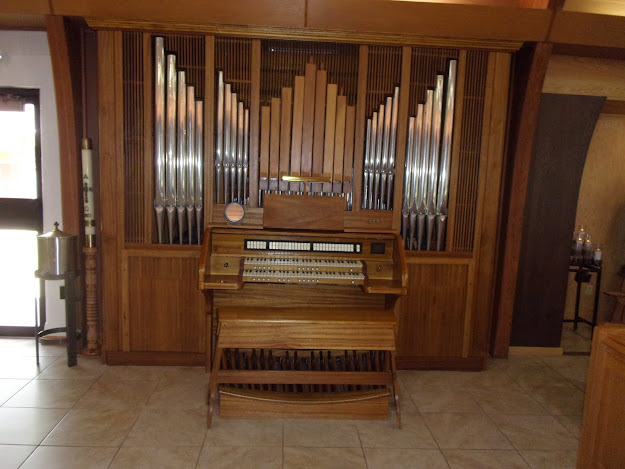Saint Gaspar del Buffalo
Rome City, Indiana
This parish sits on State Road 9 between Wolcottville and Rome City. The church was constructed in the 1950's. Originally there was a school, but sometime part of the school building was annexed into the church. The church was once cruciform, but now sits in an awkward right angle shape, but with the altar left unturned.
The church sits in the midst of the sprawling ubiquitous Indiana cornfields . The well kept landscaping keeps the church appearing tidy. The school to the left, church in the middle, and rectory to the right.
The overhang over the entrance was a later edition to the church, likely in the 90's or 2000's. The church is fairly small, only able to seat at most 100 or 150 people inside

Saint Gaspar del Buffalo was born in 1786, and in 1808 was ordained a priest in Italy. In 1815 Gaspar founded the Congregation of the Precious Blood. Later the sister order, the Sisters of the Precious would staff schools across middle Indiana and Ohio, as well as other states and countries. By the 1950's the order was a massive powerhouse that simply fizzled in size after the 60's. Now many of the convents have been sold and converted, and the seminary near Maria Stein, Ohio has been made into a retirement home for priests and religious.
The church's stained glass is an attempt at modernist tradition. This was a concept of design that developed in Germany in the late 1920's and reached American churches by the early 1950's. By the 60's all churches built at that time had varying degrees of modernist influence. This church has thin, slender stained glass windows found in older style churches, but only in modern churches are they floor to ceiling.
A pleasant surprise was this pipe organ to the right of the sanctuary. An even bigger surprise was the fact that the pipes are not simply a façade of pretty decorated pipes, these actually make noise. I don't think I've ever seen the organ to the side with actual pipes as well.
The sanctuary is very modernist, but hints ever so slightly to a pre-Vatican II past. The first hint is the priests seat to the far right, also known as a Sedilia. The center seat was for the Priest while the flanking seats were for the deacon and sub-deacon; both positions were abolished post Vatican II. The next hint is the centralized tabernacle against the back wall. This is a sign that the altar was once flush up against the back wall to offer ad orientum Masses. The sanctuary has obviously been renovated since 1970 (when the norms of Vatican II took effect)

The windows on the left were of the seven sacraments. If there is anything the modernist Catholic architecture is known for, it's polygons mixed into a stained glass window. I do have to end this post by saying that even though I am critical of modernist architecture, the people of this church couldn't have been more kinder by letting me in to take these photos. My thanks to the parishioners and pastor of Saint Gaspar del Buffalo Church.












No comments:
Post a Comment